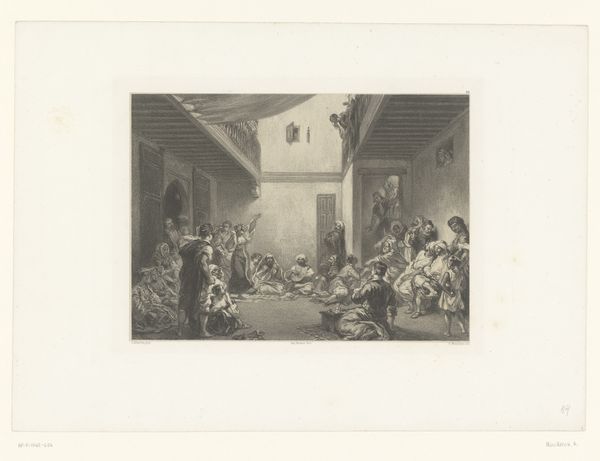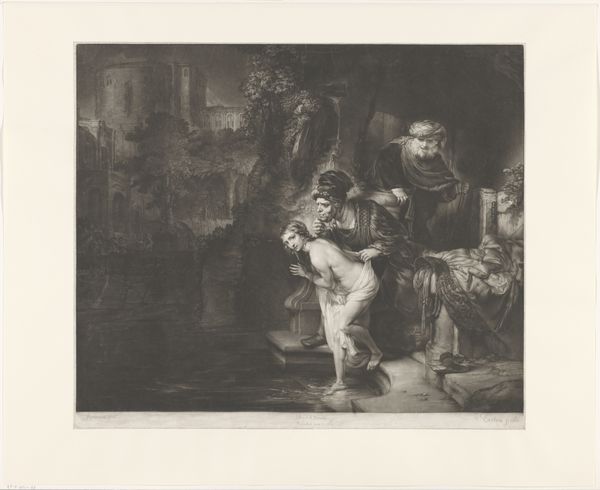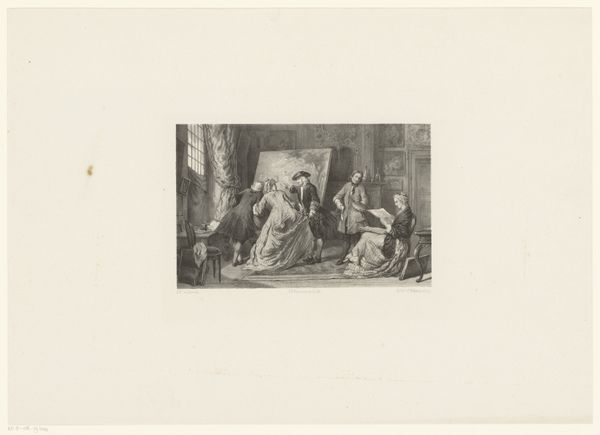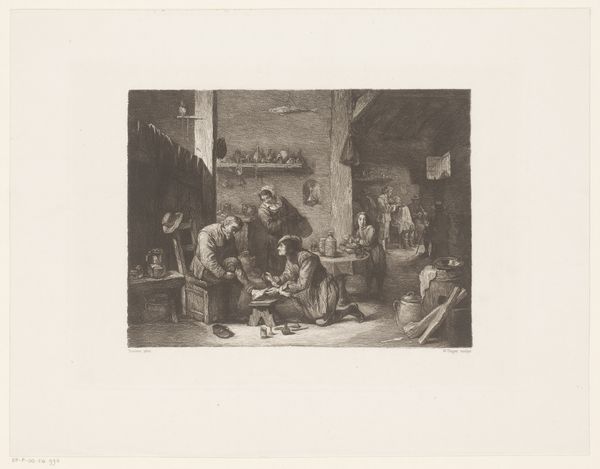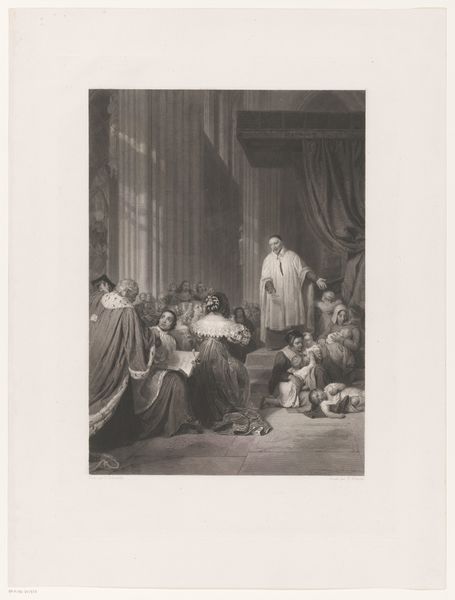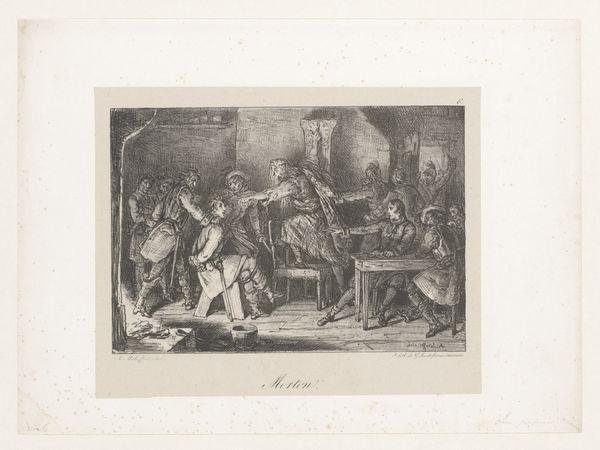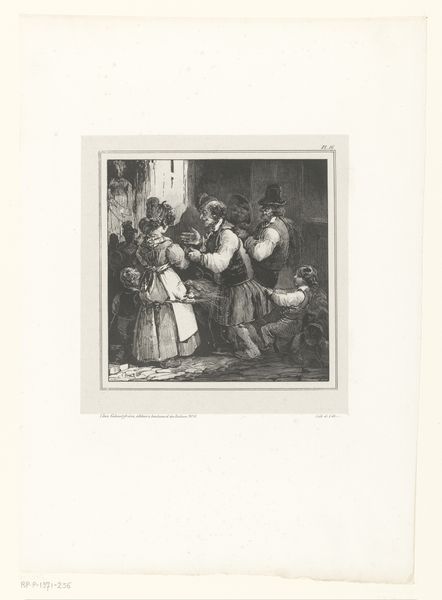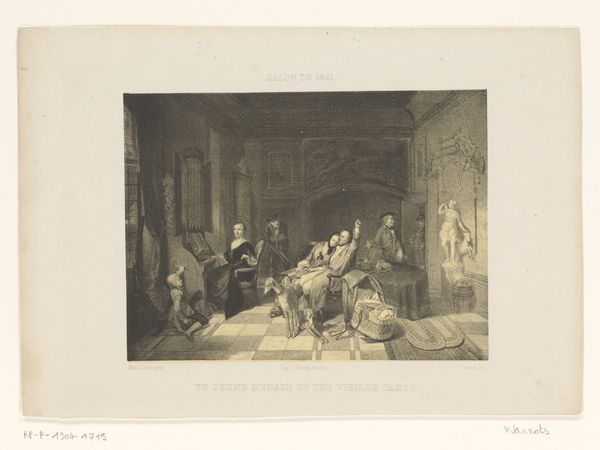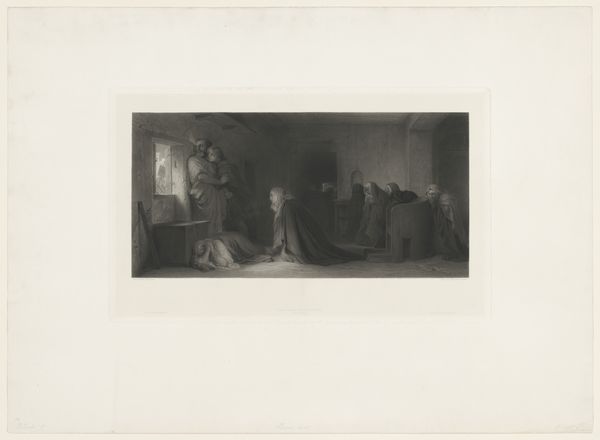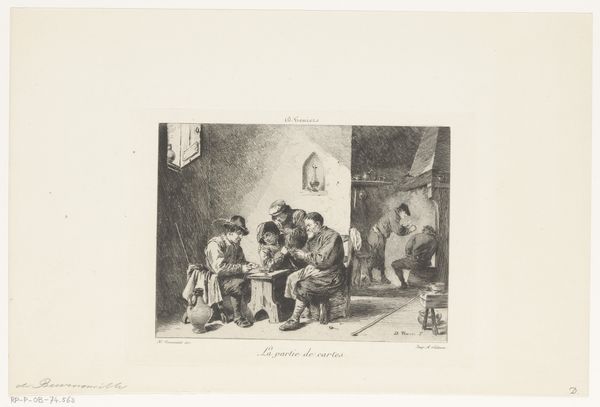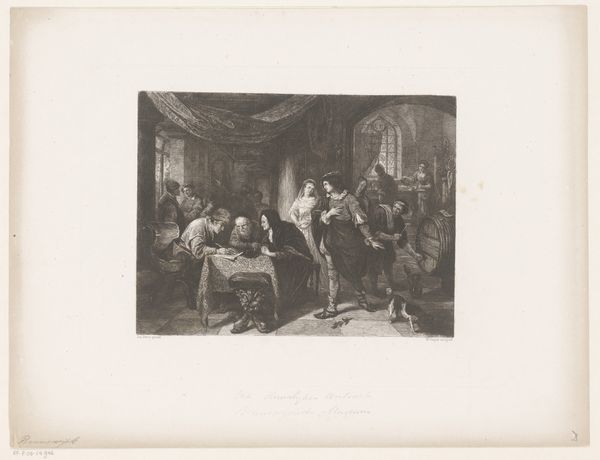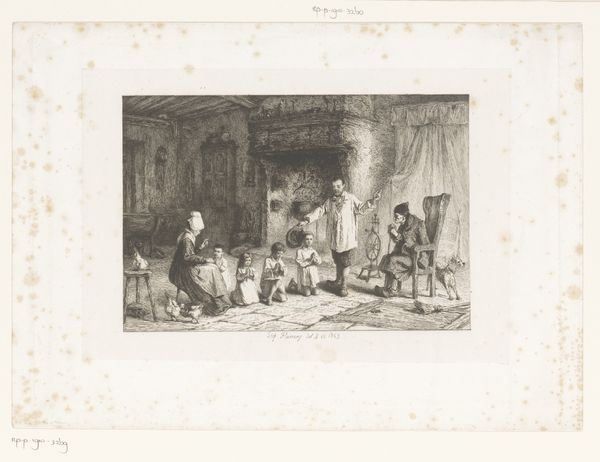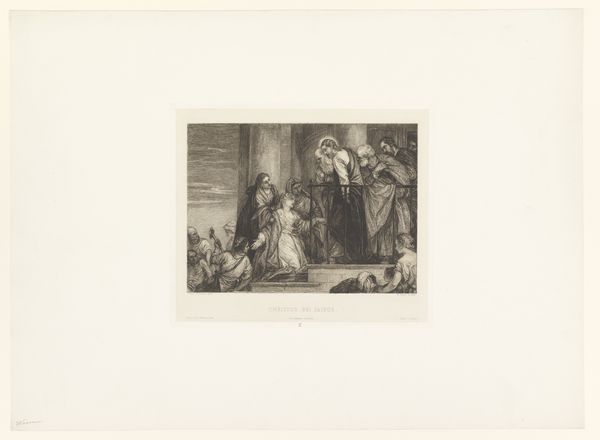
print, engraving
#
print photography
# print
#
figuration
#
genre-painting
#
history-painting
#
academic-art
#
engraving
#
realism
Dimensions: height 386 mm, width 534 mm
Copyright: Rijks Museum: Open Domain
Adolphe Mouilleron made this print called “Jewish School” sometime in the mid-19th century. It’s an etching, meaning that the image was created by drawing lines through a waxy ground on a metal plate, then bathing it in acid. Look closely, and you can see how the varying densities of line give the whole scene its light and atmosphere. Mouilleron was a master of this technique, which by his time had been honed over centuries. Etching lent itself to the industrial revolution: images could be reproduced and disseminated widely and cheaply, fueling an explosion of print culture. Prints like this one give us insight into the social and cultural context of the time. In this case, the image portrays an intimate scene of Jewish education. While the means of production might seem distant from the subject, they were in fact intimately linked. Etching democratized image-making, and in this case, gave visibility to a community that was often marginalized. It is a reminder that even the most seemingly straightforward images are the product of skilled labor and cultural forces.
Comments
No comments
Be the first to comment and join the conversation on the ultimate creative platform.
